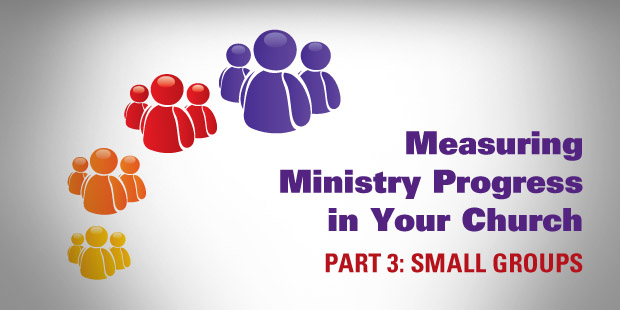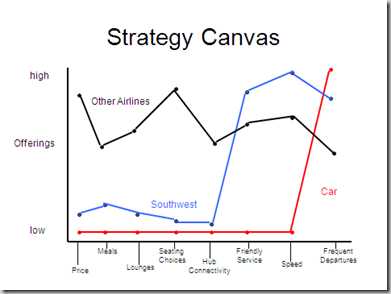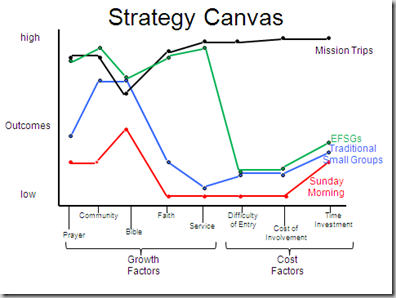
Measuring Ministry Progress in Your Church, Part 3: Small Groups
5 useful measurements for Bible study group involvement.
In a prior post we explored the first measure of ministry progress: attendance. We looked at 5 measurements related to church attendance.
Another relatively simple measurement to make is involvement in Bible study (or whatever your church calls it) groups.
As I speak with pastors, I’ve discovered this is as common a measure as attendance, and it’s an important measure. As one pastor explained about his church:
[This is an indicator that] people aren’t simply using the church but wanting to partner in the Gospel and do community with other Christians.
Why do groups exist?
As the pastor above has done, identifying why these groups exist is essential.
Let me illustrate it with an example. Why does a soccer team have mid-week training?
- Is it to build relationships?
- Is it to have a fun activity on a Wednesday night?
- Is it to get fit?
- Is it to develop better ball skills?
Training will most likely accomplish these things, but the goal of training is to be prepared to win the match on Saturday afternoon. If training doesn’t meet this purpose, something needs to change. If people are becoming great friends, but this comes at the expense of preparation for the game, training hasn’t achieved what it exists to do.
I believe it’s very important to clarify what the purpose of the groups are, and ensure they are meeting this purpose, and include this with other measurements about group numbers and attendance.
Without this clarity, improving your effectiveness at multiplying groups and increasing the number of groups could actually work against what your church is striving to achieve.
Without a direction, running faster in the wrong direction will just get you to the wrong place, sooner.
At Church by the Bridge, the purpose of our Connect Groups is maturity. What is the purpose of these groups at your church?
3 cautions about measuring Bible study group involvement
As with measuring attendance, the most basic measurements – number of groups, and number of people in groups, simply aren’t enough enough. Here’s why.
- People can sign-up for a group, but not attend. You can have 60% (or higher) of your church signed up, but signing up is the easy part. Attending is where the rubber hits the road. In a friend’s group last year, 2 of the people who signed up for the group never turned up throughout the entire year.
- Attendance can drop. You can have high attendance at the start of the year, but it can drop as the year progresses. If this happens, it’s worth asking the question – why? Perhaps the groups are getting so large that people don’t feel they are able to contribute, or feel uncomfortable sharing with new people in the group each week.
- The groups may not be achieving their purpose. This is my point above. Lots of people in lots of groups that aren’t helping people to mature/the church to be united/people to confess their sins/new people to explore church life – whatever the purpose is – is in fact, not helpful.
5 useful measurements for Bible study group involvement
I believe there are several steps necessary before jumping into the measurements.
Step 1. Identify the purpose of the groups. Why do they exist?
Step 2. Identify how progress towards this goal (e.g. maturity) will be measured. I think this is by far the trickiest part of the process.
Step 3. Then, keep track of the following measurements:
- Measurement #1. The number of small groups per adult members.
- Measurement #2. The % of adult members who have signed up for a group.
- Measurement #3. The frequency of attendance of members. As with attendance, it’s important to know not just who has signed a form, but who is actually going along to their group.
- Measurement #4. The attendance of leaders to training and discipleship events. This will look different in every church, but involves measures such as attending leadership training events, meeting regularly with the small groups pastor, etc. If the leaders aren’t well connected to the church’s purposes, the groups can easily get off-track.
- Measurement #5. This is optional, and links back to the purpose of the group. If groups are an entry point for unbelievers (e.g. a place where church members are encouraged to invite their friends to), you could track how many unbelievers are joining groups. Depending on the purpose of your groups, this 5th measurement can be adjusted.
Tools for measuring progress
If you’re going to get serious about measurement, you’ll need tools that help you to track how you’re progress. Most church databases will enable you to keep a roll of attendance – at church and in groups. We use Elvanto, but there are many other helpful solutions out there (here’s a series that explores how to select a church member database).
Read Part 1 of this series here.
Read Part 2 of this series here.
Read more from Tim here.

Tags: Multiplication, Progress, Small Groups, Steve Kryger

























